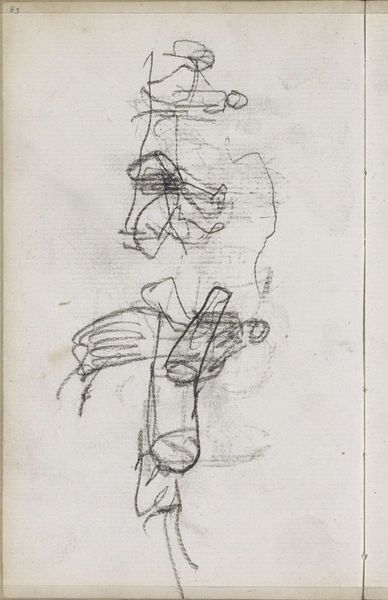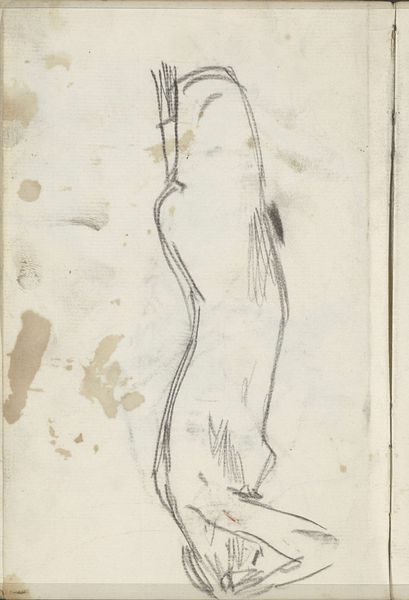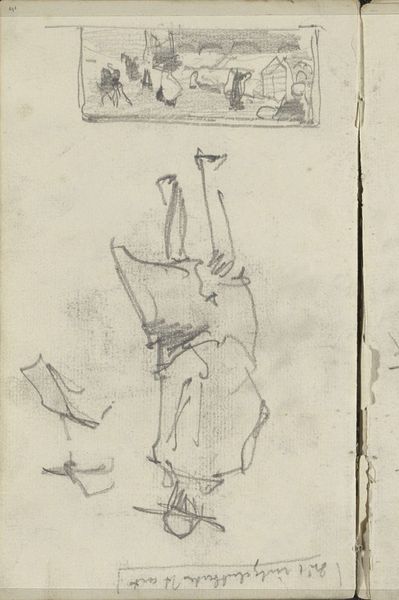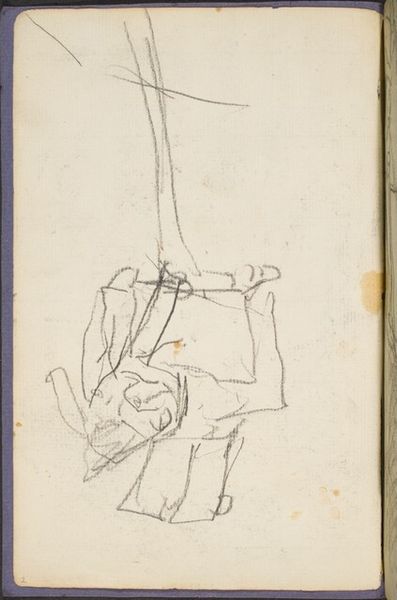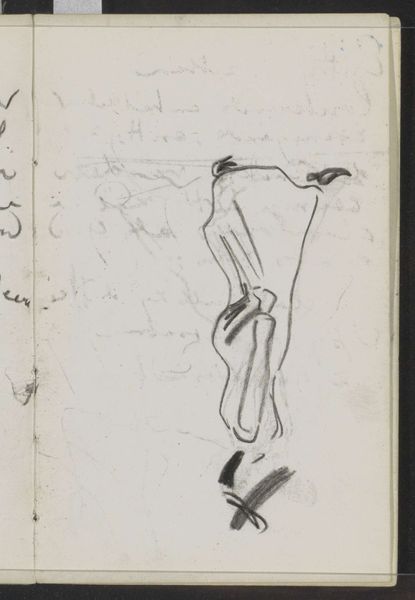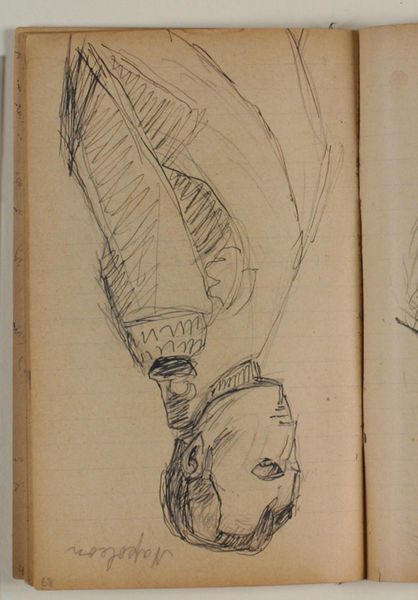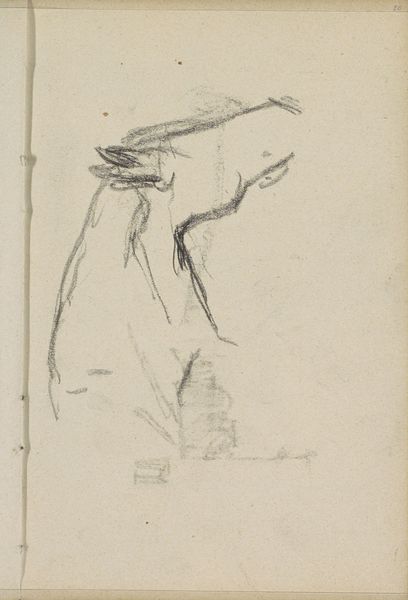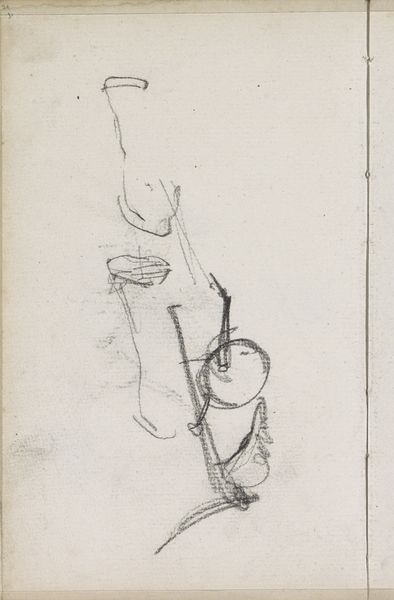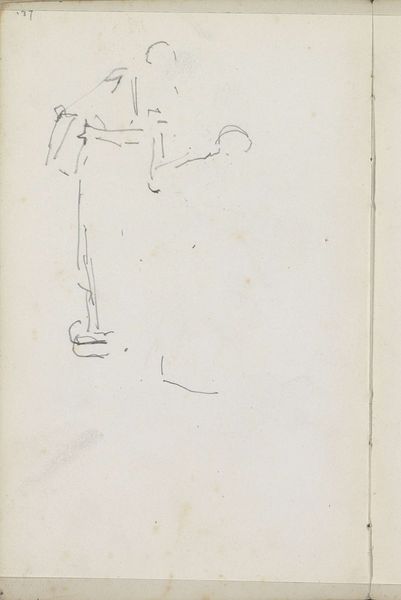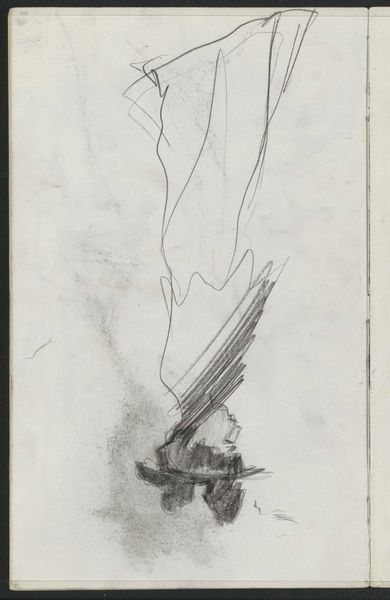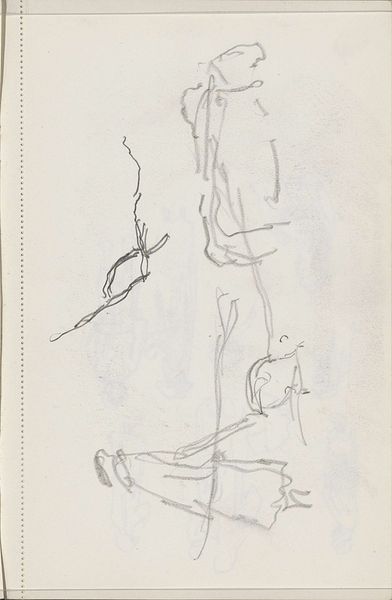
Copyright: Rijks Museum: Open Domain
Editor: This is Isaac Israels’s “Twee staande vrouwen,” which translates to “Two Standing Women,” likely created between 1886 and 1934. It's a drawing made with graphite and ink. It looks like a quick sketch, maybe something he did in a personal sketchbook. What do you see in this piece? Curator: It presents us with an interesting problem in form. Observe the economy of line, the seemingly effortless creation of volume and space with minimal means. Consider how the artist employs hatching and cross-hatching, not to mimic reality, but to construct a visual architecture. Where do you think the artist focuses his compositional attention? Editor: Well, it seems like the faces, though quickly rendered, are more defined than the flowing lines of the dresses. Does this suggest he was more interested in capturing their character than their attire? Curator: Precisely. But note too the strategic placement of those faces within the larger composition. The artist is playing with the tension between representation and abstraction. The dress acts almost as an anchor that defines the posture and provides spatial reasoning for the composition. What affect does this have on your understanding? Editor: It does ground the figures but, it also almost obscures them, creating an interesting dynamic between what’s revealed and what’s hidden within the same composition. Curator: Exactly. This push and pull invites a semiotic reading. How can we interpret this "incompleteness"? Is this to invite viewers to participate in their world? What do the gestures or angles reveal to the world? Editor: I hadn't thought about the active role of the artist in selecting particular angles for a sketch. Curator: Consider, too, the material reality of the sketch: the grain of the paper, the weight of the graphite, the immediacy of the artist's hand. These are all formal elements that contribute to the artwork's meaning. Editor: Seeing it that way makes it feel less like a simple sketch and more like a constructed composition, drawing us to the techniques involved in image making. Curator: Indeed. Close visual analysis is key to appreciating art.
Comments
No comments
Be the first to comment and join the conversation on the ultimate creative platform.

